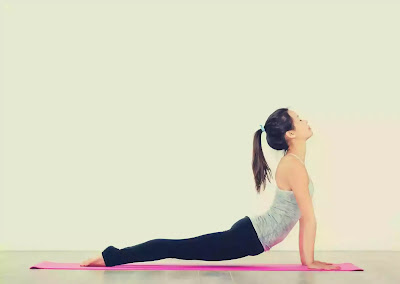Yoga asanas for diabetes | Are yoga asanas good for diabetes?
Why practice yoga asanas for diabetes?
Yoga asanas for diabetes, including its breathing practices (pranayama), focus on the root cause of the problem and helps them cure.
Apart from relaxing and strengthening muscles, yoga asanas for diabetes relieve several health problems like diabetes, high blood sugar levels, and many more.
Furthermore, yoga is the top recommendation for diabetes management.
Regular yoga practice, combined with healthy eating and lifestyle practices, can reduce the risk of diabetes and its other complications like heart diseases, blood sugar spikes, etc.
Many yoga postures or yogic practices improve blood circulation, the functioning of organs like the pancreas, liver, which develop their ability to secret insulin and thyroid that helps cure diabetes.
Further, it empowers physical, mental, and emotional abilities promoting a healthy lifestyle, mindful eating, and some devotion and discipline to heal you completely.
Let’s know which yoga asana can serve you best for diabetes control:
1. Bhujangasana
Bhujangasana, also known as cobra pose, is a relaxing backward bending yoga asana. The final position of this asana resembles a cobra with its hood raised.
It is a healthy yoga asana pose for diabetes patients. This relieves stress and pain and introduces flexibility.
Plus, it strengthens the spinal cord and relaxes abdominal organs. Additionally, the yoga pose alleviates constipation and stimulates the appetite.
Bhujangasana posture:
- Lie flat on your stomach with your legs straight.
- Now, take your palm to either side of your chest with the elbow pointing outwards.
- Relax your body. Inhale and raise your forehead, shoulders, and then chest. Use your back muscles and take some support from your hands.
- Don’t hold your breath, preferably, calm your breathing. Maintain this final position for some time to come back to the beginning position.
- Take deep breaths and relax.
2. Pavanmuktasana
Pavanmuktasana is helpful for the abdomen, abdominal muscles, pancreas, and liver. It removes toxins from the body in the form of gas and promotes blood circulation.
Additionally, this is considered a helpful asana for diabetic patients as it relieves the liver and pancreas that helps blood sugar control.
Moreover, it takes care of the lungs and heart health. Pavanmuktasana removes toxic gases from the body, aids constipation, messages organs & muscles, and improves spinal flexibility.
Its regular practice promotes weight loss and the burning of abdominal fat. Apart from these usual benefits, the yoga pose also relaxes the pelvic region & reproductive organs. Hence, it aids menstrual disorders.
Pavanmuktasana pose:
- Lie down in a supine position. Inhale and raise your legs.
- Exhale and bend your legs such that your knees touch your chest.
- Clutch your knees by interlocking your hands.
- Now raise your head to touch your knees.
- Breathe comfortably, maintaining this posture.
- Now, slowly come back to your starting posture.
3. Vajrasana
Vajrasana is also known as the diamond pose. You can even practice this simple posture after a meal. It is a comfortable yoga asana for diabetes control.
Benefits
- It aids digestion.
- Vajrasana relieves constipation, acidity, and various digestion-related problems.
- It prevents back pain, stomach disorder, and urinary problems.
- This also promotes proper blood circulation throughout the body.
Vajrasana poses: Sit on the mat with your legs folded as your calves touch the thighs and soles touch your buttock. Keep your spine straight and breathe conveniently.
4. Tadasana
Tadasana is a standing yoga pose, also known as a Mountain pose. It is a basic yoga asana that also focuses on building overall body balance.
Benefits:
- This yoga posture heal gastritis, indigestion, and acidity.
- It enhances posture, respiratory system, and digestive system functions.
- Moreover, tadasana helps increase height.
- That practice Strengthens ankles and knees.
- Besides, tadasana relieves back pain and discomfort during menstruation.
- It improves flexibility.
Tadasana pose:
- Stand straight with your feet a little apart
- Take a deep breath, interlock your fingers, and raise your arms
- Pull your arms upward. Raise your heels, and balance yourself on your toes
- Feel the stretch from toes to fingertips
- Be in this position for 30 sec or as long as you can
- Now come back to the ground while exhaling and repeat the process 10-times
Yoga for diabetic patients
A research study on around 900 diabetic older adult patients suggested that yoga practice can improve glycaemic control in the body. (in a brief period with long term inclusive effects)
Regular yoga practice showed a favorable effect on HbA1c readings. It is a glycated hemoglobin test that provides the average of the past three months of sugar control with a 6% reading indicating healthy glucose control.
For a diabetic patient – such tests and readings are essential to avert complications like heart disease, stroke, blindness, kidney failure, etc.
As diabetic patients could only practice moderate-to-intense exercise, yoga practices, including pranayama, and meditation can provide favorable moderate-intensified ratios and help control blood glucose levels.
Moreover, diabetic conventionalized treatments also include prescribed medicines and lifestyle modifications like a healthy high-fiber diet and regular physical activity for at least 3-days a week.
Yoga asanas merged with pranayama help lower cholesterol, oxidation stress, body weight, blood pressure, heart rate, pulmonary functions, and coagulation outline.
Besides, researchers from India, Sri Lanka, and Brisbane analyzed how yoga can replace physical exercise to control blood sugar levels for diabetic patients.
They found that yoga is becoming a priority of diabetic patients and is also used as additional therapy to control blood sugar levels. Also, many patients replaced aerobic physical activity with regular yoga practice.
Although yoga and exercise had the same effect on cholesterol level, blood pressure, and lipid profiles, yoga influenced glycaemic control. Plus, yoga also helped weight loss, maintaining waist circumference.
However, a more specific study is crucial to the topic. That includes proper and uniform protocol to come up with concrete results to conclude. But still, it is suggested to practice yoga in addition to physical exercise.
Surya Namaskar for diabetes patients
Surya Namaskar is a complete workout for the body and does not include any equipment. This energizes the body so that it can withstand everyday routine.
Moreover, it also provides some additional benefits like confidence, decision-making, leadership skills, intuitive abilities, and creativity.
Thus, that can also enhance the size of your solar plexus when practiced regularly.
Although Surya Namaskar is suitable to practice any time of the day, the most appropriate time is a little before or after sunrise or sunset.
It freshens up and refreshes your body and mind. It also increases stamina and immunity.
Benefits:
- It helps in weight loss. Performing Surya Namaskar at a faster pace serves as a complete cardio exercise for the body. The process includes stretching and relaxing abdominal muscles that help you shed pounds on improving your metabolism.
- Surya Namaskar causes proper blood circulation throughout the body. It ensures detoxification, prevents wrinkles, early aging, and returns the natural glow of your skin.
- Additionally, it aids the digestive system. Performing the poses stretches your abdominal range. Furthermore, it circulates blood flow to the digestive tract providing better functionality of digestive organs.
- This yoga practice also helps you regulate your menstrual cycle as performing these asanas every day gets you healthy abdominal muscles.
- It keeps your blood sugar in check and reduces the risk of heart diseases.
- Doing Surya Namaskar also benefits people having thyroid problems because it normalizes the functioning of the endocrine glands. Moreover, it improves memory and the proper functioning of the nervous system.
- Surya Namaskar enhances your sleeping pattern and helps you get a sound sleep at night, and induce energy throughout the day.
- Its regular practice involves rhythmic breathing that empowers lung capacity that maintains better detoxification.
Some precaution points
- Before starting a yoga program, people suffering from diabetic issues or any health problem must have a health expert’s advice.
- Start slowly. It could be a little challenging to start any physical activity. Having patience would help you achieve better health goals. Likewise, overdoing any activity can cause injury. That’s why this is reasonable to start slow and then switch to moderate.
- It is not a rule to perform every task with excellent precision. Moreover, this is not mandatory to perform any yoga pose to the same degree an instructor can do, especially for beginners. So, you can adopt or modify yoga poses according to your strength and flexibility. Also, you may use support if you need it.
- You can always ask for some additional help required. Talk to the instructor if you need extra support or assistance.
Combine exercise with a healthy diet
Diabetic patients have to focus on blood sugar control as this successful step can prevent further diabetic complications.
To manage healthy glucose levels, people should maintain a healthy diet with some regular physical activity.
A healthy lifestyle comprising a balanced diet and regular physical activity can help you control:
- Cholesterol level
- Healthy weight
- Blood pressure
- Glycaemic level
- Healthy secretion like insulin
Managing these factors can efficiently and effectively prevent complications like heart diseases.
Moreover, people with balance problems can also perform many yoga asanas as it also permits a chair or holding support.
Conclusion
Exercise practice affects a person’s blood sugar level. Therefore, it is good to consult a doctor before some exercise program.
Moreover, there could be other factors, which can directly affect your capacity to exercise. Doctors or health experts could help you prescribe a suitable exercise for you.
Although experts consider physical exercise as a potent treatment for diabetic patients as cycling, stretching, swimming, walking, and strength training, yoga practice, exceptionally, is a great option to improve stamina and flexibility along with emotional and mental stability.




